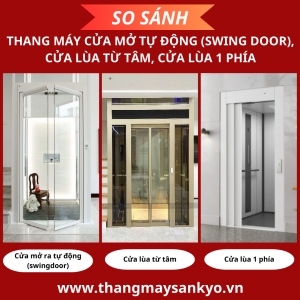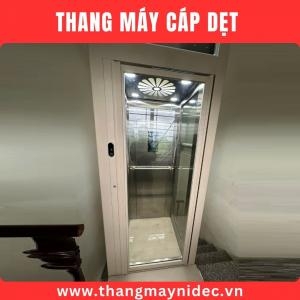The system is processing. Please wait a moment!
- Home Knowledge & Experience Sharing Experience and Knowledge About Elevators
Elevator Fire Prevention and Fighting Measures
TABLE OF CONTENTS
Fire prevention and fighting measures in elevator systems are an important and indispensable factor in the design and management process. Safety is always the top priority to ensure that all elevator users can trust and feel secure. Advances in technology, such as the use of automatic sensor systems and fire-resistant materials, have been integrated to minimize the risk of fire and explosion and protect users in all situations.
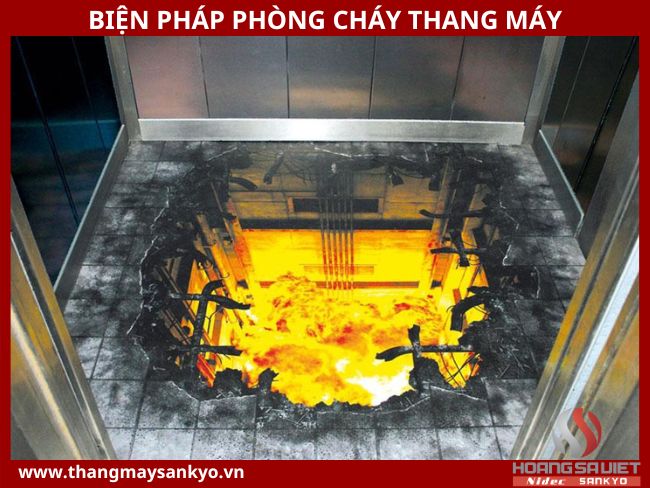
Elevator safety management, together with regular training and strict maintenance, plays an important role in ensuring that the system operates safely and efficiently. For everyone, understanding elevator fire prevention measures is not only about paying attention to technical details, but also about investing in peace of mind and convenience in daily life.
SEE MORE PRODUCTS:
THE IMPORTANCE OF ELEVATOR FIRE PREVENTION MEASURES
Elevator fire prevention and fighting measures play an extremely important role and cannot be ignored. This is a special safety aspect that needs to be paid attention to in the design, construction and management of elevators to ensure the safety and protection of users. Below are some highlights on the importance of fire prevention and fighting measures in elevators :
User safety: The most important feature ofelevator fire prevention measuresis to ensure the safety of users. In case of fire, measures such as automatic sensors and fire-resistant materials help to minimize the risk and protect the lives of users.
Minimize Property Damage: Elevator fire prevention measures not only focus on protecting people but also face the problem of minimizing property damage. Integrated equipment and materials are capable of controlling and preventing the spread of fire, thereby limiting property loss.
Compliance with legislation and safety standards: Ensuring that elevator systems comply with legislation and safety standards is undeniable. Designing and installingelevator fire prevention measures is an important part of meeting industry safety standards.
Enhanced credibility and reliability: Elevator systems equipped withfire and explosion prevention measures are not only a safety measure but also enhance the credibility and reliability of the manufacturer or owner. Users feel more secure when using elevators with full safety measures.
Minimize impact on business operations: In apartment buildings, offices or commercial areas, fire incidents can have a major impact on business operations. Having fire prevention measures in elevators helps minimize this impact and maintain stability in the work environment.
In short, the importance of elevator fire prevention measures is not only a matter of safety but also an important part of the elevator system design and management process, supporting its stability and reliability in daily use.
SEE MORE PRODUCTS:
REGULATIONS ON FIRE ELEVATORS
The significant increase in the number of high-rise buildings has had a major impact on fire prevention and rescue work in elevators . One of the solutions with the most stringent technical requirements is the fire elevator .
Regulations on fire prevention and fire fighting elevators (PCCC) related to elevators are detailed in Circular 02/2021/TT- BXD, Promulgating QCVN 06:2021/BXD , national technical regulations on fire safety for houses and buildings. Accordingly, there are regulations on conditions for installing fire fighting elevators, technical requirements, space arrangement,... related to fire fighting elevators.
The concept of fire elevators needs to be clearly understood: “ Elevators installed primarily for the transport of people but equipped with additional protection control systems, communications and signs to allow those elevators to be used under the direct control of the fire fighting force to reach the floors of the building in the event of a fire. ”
-
In Clause 3 on Ensuring safety for people , it is stipulated that: In the space of stairwells, except for smoke-free stairwells, it is only allowed to arrange no more than two passenger elevators to go down to the first floor only with elevator shaft enclosure structures made of non-combustible materials.
For elevator shafts located outside the building, if covering is required, structures made of non-combustible materials must be used. This is to ensure the safety and efficiency of using fire-fighting elevators in today's high-rise building environment.
-
In Clause 4 on Fire Prevention, it is stipulated that
– The enclosing structures of elevator shafts (except those mentioned in Clause 3, Article 4.6) and elevator machine rooms (except those on the roof), as well as of channels, shafts and technical boxes must meet the requirements set out for type 1 fire partitions and type 3 fire floors. There is no regulation on the fire resistance limit of the enclosing structures between the elevator shaft and the elevator machine room.
Where it is not possible to install fire doors in the structures enclosing the above mentioned elevator shafts, it is necessary to arrange buffer compartments or halls with fire partitions of type 1 and fire floors of type 3 or automatic screens that close the openings of the elevator shafts in case of fire. These screens must be made of non-combustible materials and their fire resistance limit must not be less than E 30.
In buildings with smoke-free stairwells, automatic smoke protection must be provided for elevator shafts whose exits do not have fire-resistant buffer spaces with positive air pressure in case of fire.
– In basements or semi-basements, before the entrances to elevators, there must be a type 1 fire-resistant buffer zone with positive air pressure in case of fire.
-
Article 6 on Fire Fighting and Rescue stipulates:
– Houses and buildings must ensure fire fighting and rescue by solutions: structure, layout – space, engineering – construction and organizational solutions.
The arrangement and installation of fire elevators must ensure the following basic regulations:
+ Elevators primarily used for transporting goods must not be used as fire elevators.
+ Under normal conditions, fire elevators are still used to transport people. Fire elevators can be arranged with a separate elevator lobby or in a common lobby with passenger elevators and combined with an automatic group control system.
+ The number of elevators is calculated to be sufficient so that the distance from the location of those elevators to any point on the floor plan they serve does not exceed 60m.
+ If there is only one fire elevator, that elevator must reach at least all floors adjacent to the burning floor of the building.
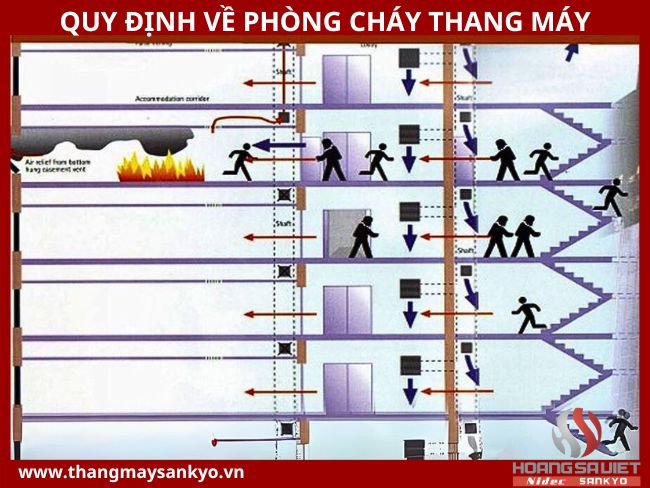
+ If there are many fire elevators arranged together in one elevator shaft, the elevators can serve different areas of the building, provided that the service area is clearly shown on each elevator.
+ In all cases, the service form of fire elevators must be the same and common, for example, the elevator only serves odd floors or even floors or all floors.
+ If there are refuge floors, each floor must be served by at least one fire elevator.
+ In normal operation mode, the fire elevator doors must not open to those refuge floors and the elevator shaft doors at those refuge floors must be constantly locked and only automatically unlocked when switching to fire service mode.
+ In case of fire, fire elevators must ensure that firefighters:
-
Be the only person authorized to control and operate to access the fire with his equipment easily, familiarly, safely and quickly.
-
Safely protected against fire and smoke by appropriate measures, especially when exiting such elevators.
-
There is clear and safe access to those elevators as well as to the floors served by those elevators.
-
Do not travel more than two floors to reach any fire-prone floor of the building.
+ Protected in separate elevator shafts (not shared with other types of elevators) and in each such elevator shaft there can be no more than 3 fire elevators. The structure surrounding the elevator shaft must have a fire resistance limit of not less than REI 120.
+ The fire elevator lobby is a buffer zone ensuring all of the following regulations:
-
Has an area of not less than 4m2;
-
When combined with smoke-free stairwell lobbies, the area shall not be less than 6m2;
-
Enclosed with class 1 fire partitions;
-
DN 65 water supply hydrant installed for professional fire fighting force;
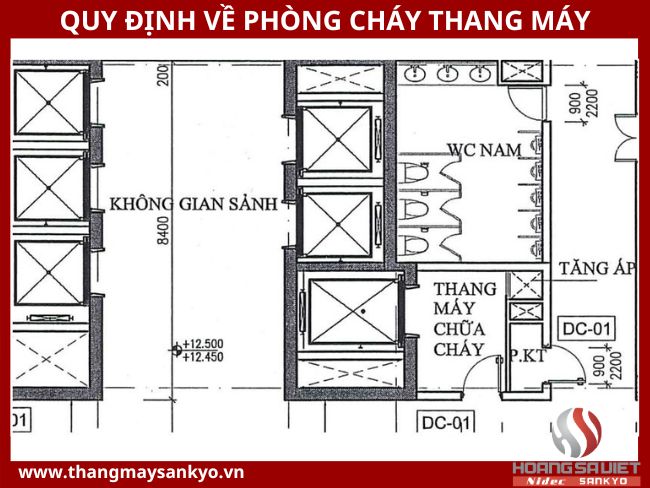
+ The arrangement of fire elevators must anticipate the movement path of the professional fire fighting team and ensure that the fire fighting team can access all rooms on all floors of the building.
+ The load capacity of the fire elevator must not be less than 630 kg for apartment buildings of group F1.3 and not less than 1,000 kg for manufacturing buildings and other public buildings.
+ The moving speed of the fire elevator must not be less than H/60 (m/s), where H is the lifting height (m).
+ The enclosing structure of the fire elevator cabin must be made of non-flammable or low-flammable materials.
– All basements in buildings with 2 to 3 basements must be equipped with a two-way emergency communication system between the fire control room and necessary areas, including fire elevators.
SEE MORE PRODUCTS:
Additional regulations on fire safety for some specific groups of houses:
For certain specific groups of buildings there are also additional regulations for fire lifts and related components, specifically:
For houses (with fire protection height from over 50m to 150m) belonging to fire hazard groups according to function F1.2, F4.3 and mixed houses
– Elevator lobbies must be separated from corridors and adjacent rooms by fire-resistant partitions with fire resistance limits as prescribed in A.2.24.
– The materials of the elevator cabin components must be constructed like fire elevators.
– Fire elevators must be arranged in separate elevator shafts, with independent elevator lobbies. The exit from this elevator to the outside of the building must not be arranged to go through a common lobby.
– The number of fire elevators for each fire compartment must be calculated so that the distance from the location of those elevators to any point on the floor plan it serves does not exceed 45m.
– The components surrounding the fire elevator cabin (walls, floors, ceilings, doors) must be made of non-combustible materials or from group Ch1 materials.
– Surface finishing materials for cabin enclosure components are applied as for rooms as specified in A.2.25.
– Fire resistance limit of elevator shaft structure and elevator machine room is taken according to regulations in A.2.24.
|
Minimum fire resistance limits of building components |
||
|
Name of structure (house part) |
Minimum fire resistance limit for houses with fire protection height, m |
|
|
> 50 and >= 100 |
> 100 and =< 150 |
|
|
-1 |
-2 |
-3 |
|
1. Elevator shafts and technical pipe shafts; ducts and technical boxes do not cross the boundary of the machine compartment. |
REI 120 |
REI 120 |
|
2. Elevator shafts and technical pipe shafts; channels and technical boxes cutting across the boundary of the fire compartment; Fire-fighting elevator shafts |
REI 150 |
REI 180 |
(REI is the fire resistance of a structure or object. When talking about REI, it means the ability to withstand fire and temperature. For example, REI 120 means the fire resistance of that object or structure increases the fire resistance limit to 120 minutes.)
– The doors of the elevator lobby and the doors of the elevator machine room must be air and smoke-proof.
– Electrical system: Electricity supplied to technical equipment systems, including fire-fighting elevators, must ensure the operation of those equipment for at least 3 hours from the time of fire and must be taken from 3 independent power sources.
For houses in fire hazard group F1.3 (apartment buildings) with fire protection height from 75m to 150m
– The elevator shafts of the apartment must not be connected to the rest of the building. The shafts of the technical system (including the garbage pipes) of the apartment and the rest of the building must be separate.
– Smoke protection for houses, automatic fire alarm and fire extinguishing systems are implemented according to the following additional regulations:
+ The automatic fire alarm system must clearly indicate the address of each apartment. Smoke detectors must be installed in the apartment rooms and corridors, including the elevator lobby.
+ It is necessary to equip fire alarm systems, equipment and automatic fire fighting means in channels, electrical technical wells, communication wells and other technical wells with fire risk.
+ Power supply for fire protection system includes: elevators serving to transport fire fighting forces and vehicles; smoke protection system; automatic fire alarm and fire fighting system; must be taken from independent electrical cabinets or separate electrical panels with different paint colors, following two separate routes to the distribution equipment of each fire compartment.
Smoke protection regulations for areas related to elevators
– Smoke protection must provide outside air to areas including:
+ In elevator shafts (when it is not possible to support the air supply to buffer zones in fire conditions) in buildings with smoke-free elevator shafts.
+ In the buffer compartment of the fire elevator.
+ In buffer zones in front of elevators (including elevators) in basements and semi-basements.
– The air supply flow used for smoke protection must be calculated to ensure that the air pressure is not lower than 20Pa at the following locations:
+ The lower part of the elevator shaft when the elevator shaft doors are closed on all floors (except the bottom floor).
+ Buffer zones on fire floors in buildings with smoke-free stairwells type N3, when the entrance to the corridor or lobby in the basement, elevator waiting room and buffer zones in front of the elevator have an open door, while on all other floors the doors are closed.
– When calculating the parameters of the air supply system, it is necessary to consider:
+ The residual air pressure is not lower than 20Pa and not greater than 50Pa – in elevator shafts.
+ Elevator cabins communicating with stair landings and when the elevator doors on the floor under consideration are open.
SEE MORE PRODUCTS:
SOME EFFECTIVE MEASURES TO PREVENT ELEVATOR FIRE AND EXPLOSION
Technical measures to prevent elevator fire and explosion
The structure of the elevator must comply with technical regulations and standards to ensure fire and explosion safety. Specifically as follows:
1. Elevators should be constructed of non-flammable or fire-resistant materials to reduce the risk of fire and explosion.
2. There must be automatic systems such as automatic fire alarm systems, automatic fire extinguishing systems, ventilation systems, and pressurization systems to enhance the ability to cope with fire incidents.
3. The elevator shaft must be placed in a fire-resistant and insulated structure to ensure safety.
4. Elevators are not permitted to be used to transport flammable, explosive, or any combustible materials.
5. The maintenance and servicing of elevators must comply with the manufacturer's instructions and relevant legal regulations. These activities must be carried out by professional and experienced units in this field.
Measures to prevent elevator fire and explosion through propaganda and education
Strengthening propaganda and education to raise awareness of fire safety for both residents and employees using elevators is an important priority. Residents as well as officers and employees using elevators need to be equipped with solid knowledge of fire prevention and fighting and know how to use elevators safely in fire and explosion situations.

At the same time, the process of checking and monitoring compliance with fire safety regulations for elevators also needs to be strengthened. The authorities must regularly conduct inspections and monitoring to promptly detect and handle any violations related to fire safety of elevators. This is to ensure that all elevator users operate in a safe environment and are protected from the risk of fire and explosion.
Measures to propagate and educate on elevator fire prevention and fighting
Propagating and disseminating knowledge and laws on fire prevention and fighting is an important task, aiming to raise awareness of fire safety for both people and staff. In particular, propagating and disseminating knowledge and laws on fire prevention and fighting in elevators , while emphasizing regulations on the use of elevators in fire and explosion situations is indispensable.
At the same time, organizing fire drills is an effective measure to ensure preparation and effective response in case of emergency. In particular, elevator fire drills should be organized regularly, with the participation of professional forces and the community of residents, officers and employees in the building.
The process of synchronously implementing elevator fire prevention measures will actively contribute to minimizing the risk of fire and explosion, while ensuring maximum safety for elevator users.
Although elevators provide convenience, safety cannot be overlooked. Elevator fire prevention is not only the responsibility of building managers but also of the community. We need to work together to ensure that everyone can use elevators safely, thereby minimizing the risk of fire.
“Hoang Sa Viet Elevator - Always with you on every floor!”
HOANG SA VIET ELEVATOR - THE LEADING PRESTIGIOUS ELEVATOR COMPANY IN VIETNAM
Consultant: 0942.222.075 Office Headquarters: 184/20 Le Dinh Can, Tan Tao Ward, Ho Chi Minh City Hanoi Headquarters: No. 229, Van Tri Street, Van Noi, Dong Anh, Hanoi Website: thangmaysankyo.vn Email: hungpham@hoangsaviet.com
PRICE SUCCESSFUL!
PRICE UNSUCCESSFUL!



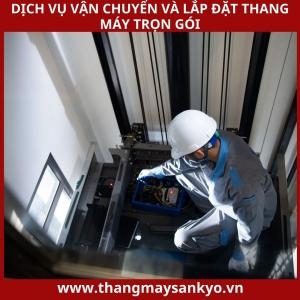
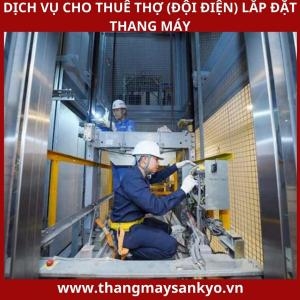
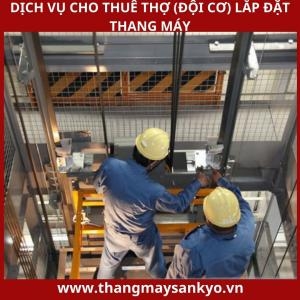

.png)
.png)
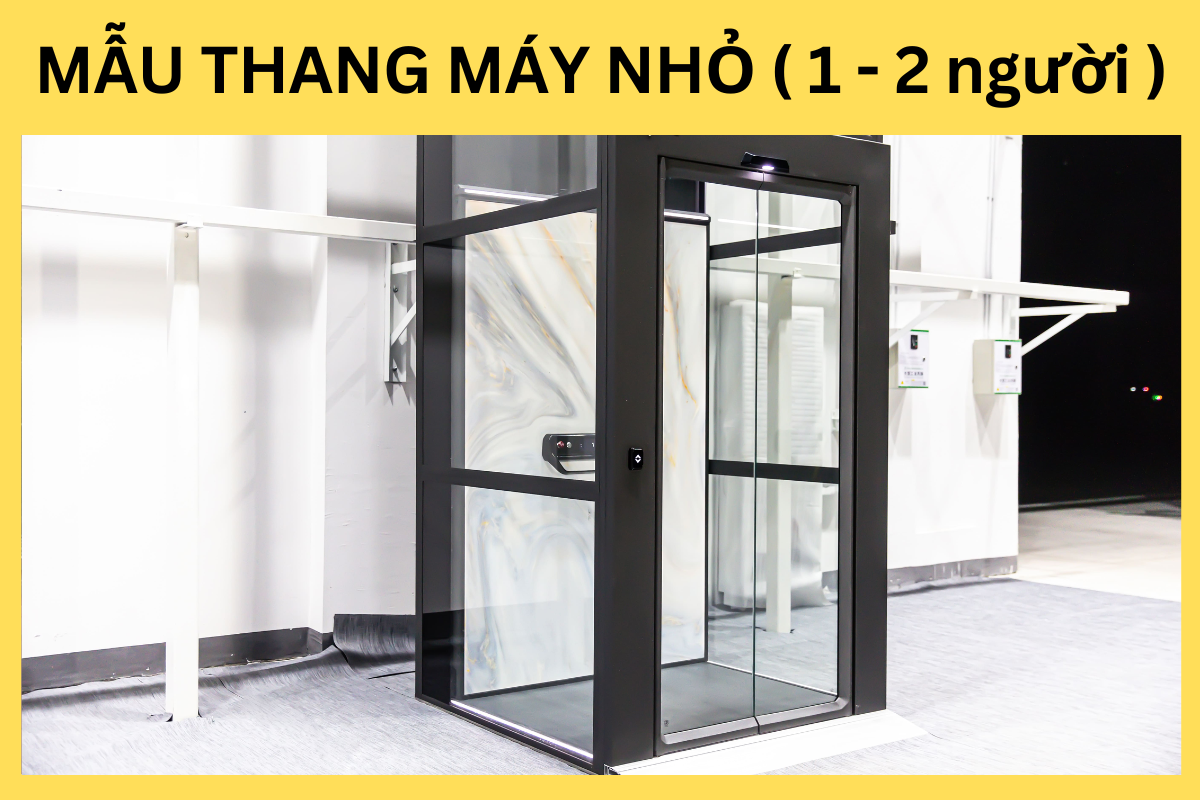
.png)
